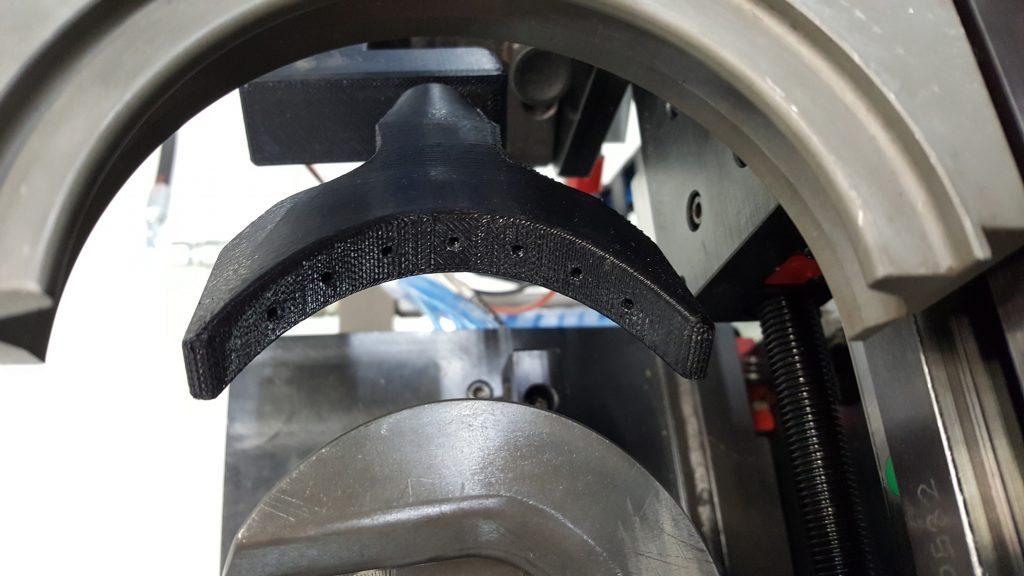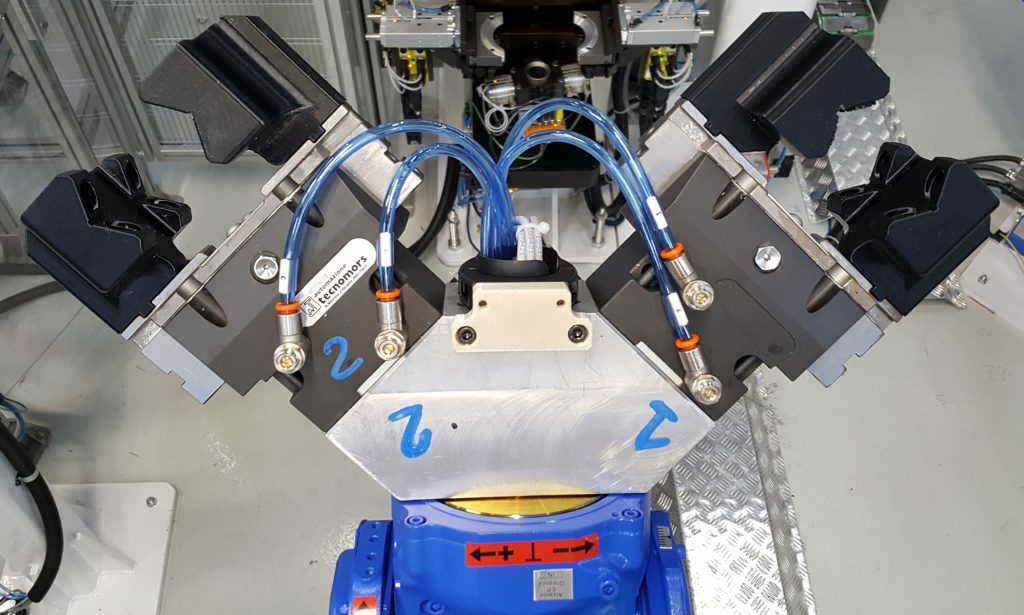GKN Driveline services over 90% of the world’s car manufacturers, including work for the Fiat Chrysler Automobiles Group and luxury car brands Maserati and Ferrari. After replacing traditional metal and plastic tools with custom made, 3D printed equivalents the GKN Driveline Florence plant has reported a reduction of almost 70% in lead times for car production. As a result, the Italian plant is now expanding its implementation of Stratasys 3D printers for tooling and replacement machinery parts on demand.
Production critical parts, redesigned
On the factory floor, 3D printing at GKN has been used to provide parts for industrial equipment, such as a missing cable bracket for a robot. In this case, 3D printing the part saved at least one week of lead time that would typically have been created by delivery from the supplier.
Complex assembly tools, such as a greasing nozzle, have also been redesigned and implemented by the team.
Carlo Cavallini is Lead Process Engineer and Team Leader at GKN Driveline Florence. Cavallini explains, “Utilizing our 3D printer, we developed a tool that dramatically improves grease distribution and eradicates the need to clean up time-consuming spillages.”
“This has been crucial to streamlining the production cycle of the half shaft, enabling us to provide customers with premium quality final parts.”

Metal matching properties
Tooling and spare parts at GKN Driveline Florence are made using FDM technology on a Stratasys Fortus 450mc Production 3D Printer. Working with ULTEM 9085, a material now standardized for use inside Airbus planes, plastic 3D printed tools can match the performance of metal equivalents at a fraction of the cost and overall weight.
These properties have been harnessed in GKN Driveline’s production of several end-of-arm tools used on the automobile assembly line.
Cavallini adds, “As we continue to design parts specifically for additive manufacturing, we are finding more and more applications that are delivering value.”
“In the future, I believe that FDM 3D printing will become an integral part of our entire tool development cycle and help us further improve business performance.”

FDM for the future of automotive
With this announcement, GKN Driveline joins a number of other manufacturers in the automotive industry ramping up application of 3D printing as a solution to tooling costs and spare parts production.
Volkswagen have been implementing the technology since 2014 and reported a saving of $160,000 in 2016 as a result. Under the direction of Avi Reichental, Techniplas are also harnessing the technology to make car production future proof.
Andy Middleton, President at Stratasys EMEA, concludes, “GKN Driveline Florence is a prime example of how a growing number of future-ready companies are leveraging the capabilities of additive manufacturing to improve different areas of their business […] It’s this type of applied innovation across the manufacturing process that has seen GKN Driveline Florence accelerate product development, reduce costs and reinvent its supply chain.”
Stay informed about 3D printing’s industrial applications and subscribe to our free newsletter. Get involved on Facebook, Twitter and at 3D printing events around the world.
Featured image shows GKN Driveline’s automobile portfolio. Photo via GKN



